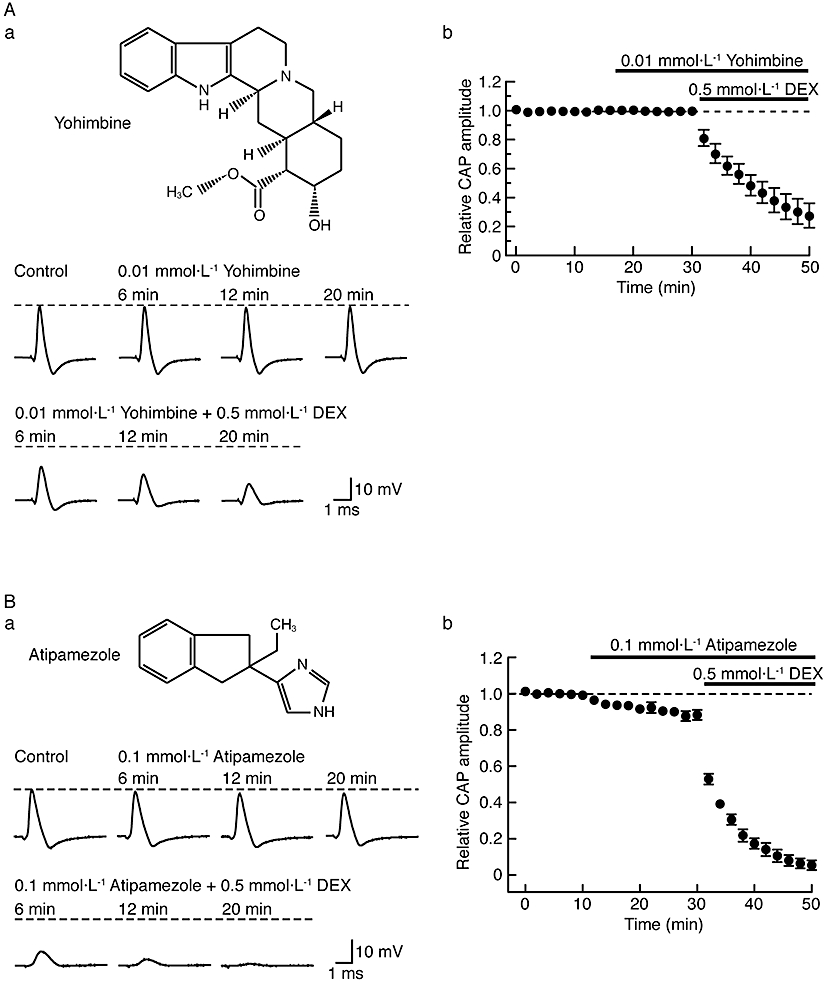Figure 4.

Dexmedetomidine (DEX; 0.5 mmol·L−1)-induced reduction in compound action potential (CAP) peak amplitude is resistant to α2-adrenoceptor antagonists, yohimbine (0.01 mmol·L−1) and atipamezole (0.1 mmol·L−1). (A, B) Effects of DEX on CAP peak amplitude in the presence of α2 antagonists (A: yohimbine; B: atipamezole). (Aa, Ba) Recordings of CAPs in the control, after 6, 12 and 20 min of exposure to α2 antagonists (Aa: yohimbine; Ba: atipamezole) and thereafter 6, 12 and 20 min in the presence of DEX together with α2 antagonists (Aa: yohimbine; Ba: atipamezole). Upper insets in (Aa) and (Ba) show the chemical structures of yohimbine and atipamezole (see Virtanen, 1989; Westfall and Westfall, 2006), respectively. (Ab, Bb) Average time courses of changes in CAP peak amplitudes following treatment with α2 antagonists (Ab: yohimbine; Bb: atipamezole) and with both DEX and α2 antagonists (Ab: yohimbine; Bb: atipamezole), relative to that before drug treatment, obtained from four (Ab) or five (Bb) sciatic nerves. Note that atipamezole (0.1 mmol·L−1) itself reduces CAP peak amplitudes.
